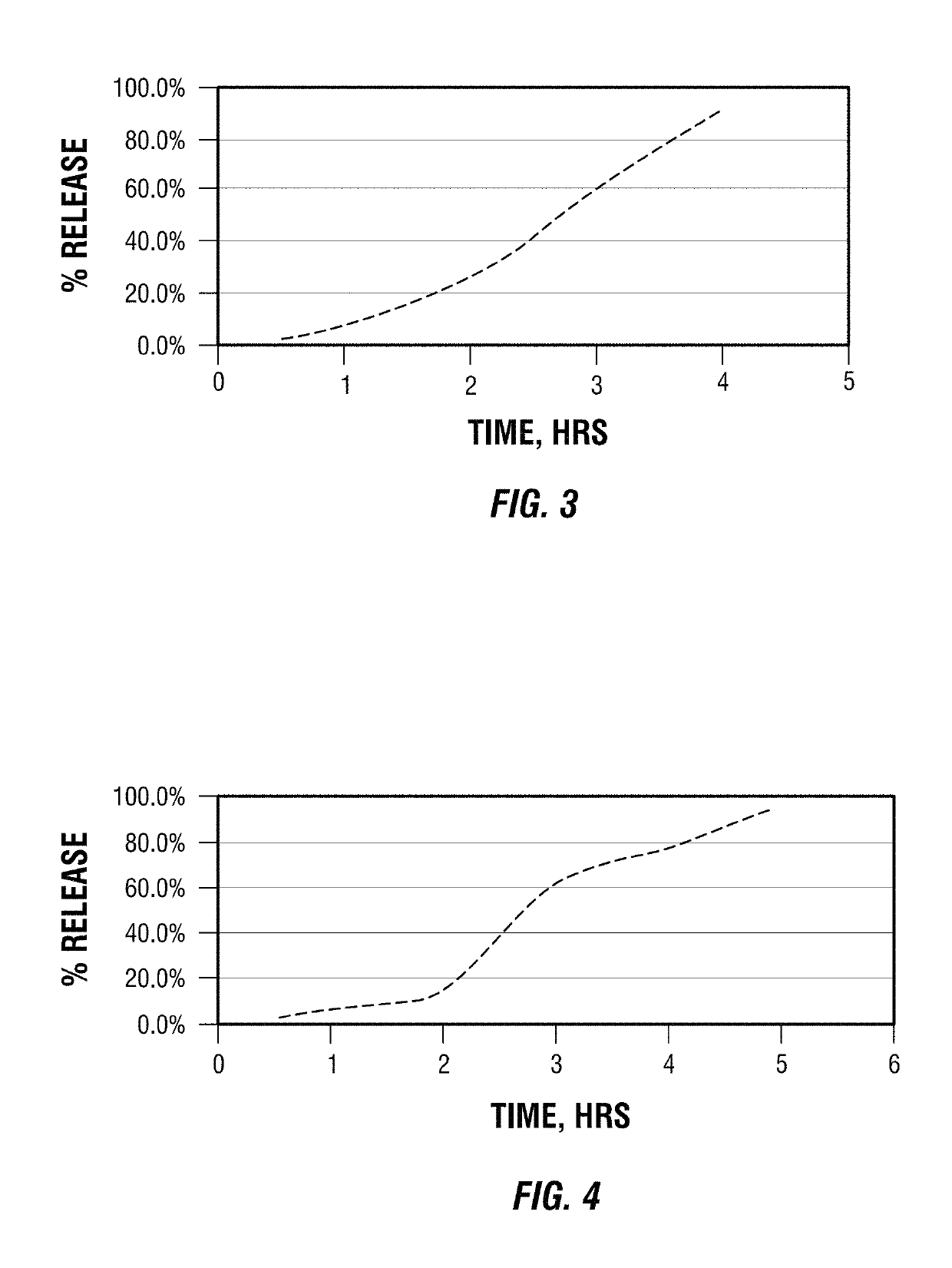Method for time-controlled release of breakers by use of breakers encapsulated within membranes containing water soluble polymers
a technology of breakers and membranes, which is applied in the direction of fluid removal, chemistry apparatus and processes, and wellbore/well accessories, etc., can solve the problems of affecting the formation, affecting the free flow of oil, and not being able to control the release method, so as to enhance the fluid mobility in the subterranean structure, reduce the viscosity of still-viscous fracturing fluid, and reduce the viscosity
- Summary
- Abstract
- Description
- Claims
- Application Information
AI Technical Summary
Benefits of technology
Problems solved by technology
Method used
Image
Examples
example 1
[0056]The method disclosed in U.S. Pat. No. 5,373,901 was repeated, wherein a material included additive, described therein as blends of vinyl acrylates, and an encapsulated breaker, was prepared following the general procedure described above. The coating latex was prepared by combining water, partially hydrolyzed acrylate, and a silica mixture. Three such samples were prepared. This encapsulation was then tested to determine the release profile of the sample by measuring the rate of release of encapsulated ammonium persulfate breaker at 65° C. and at atmospheric pressure. The weight percent of the coating materials (i.e., the encapsulating membrane) in the product made in this example is about 31%. The average release profile of these samples is shown in FIG. 3.
example 2
[0057]For comparison, a capsule, as disclosed in this application was prepared as follows: a water-soluble polymer, Polyvinyl Pyrrolidone K-90, was dissolved in water to prepare a 20% solution. 12 grams of this polymer solution was added to 528 grams of a commercial acrylate polymer emulsion, manufactured by Jonesboro, Kamson Chemicals. The resultant mixture was sprayed onto 1000 grams of ammonium persulfate at a temperature of 40-45° C. Three such samples were prepared. The weight percent of coating materials, that is, the encapsulating membrane, was about 24.2%. The concentration of the water-soluble the mixture to be sprayed was about 0.45%. The average release profile of these samples was determined. The release profile is shown in FIG. 4.
PUM
| Property | Measurement | Unit |
|---|---|---|
| pH | aaaaa | aaaaa |
| pH | aaaaa | aaaaa |
| temperatures | aaaaa | aaaaa |
Abstract
Description
Claims
Application Information
 Login to View More
Login to View More - R&D
- Intellectual Property
- Life Sciences
- Materials
- Tech Scout
- Unparalleled Data Quality
- Higher Quality Content
- 60% Fewer Hallucinations
Browse by: Latest US Patents, China's latest patents, Technical Efficacy Thesaurus, Application Domain, Technology Topic, Popular Technical Reports.
© 2025 PatSnap. All rights reserved.Legal|Privacy policy|Modern Slavery Act Transparency Statement|Sitemap|About US| Contact US: help@patsnap.com


